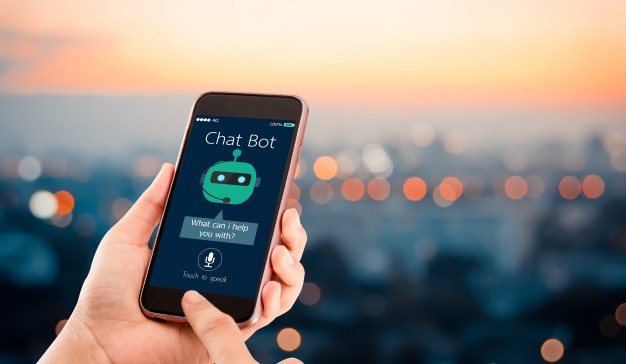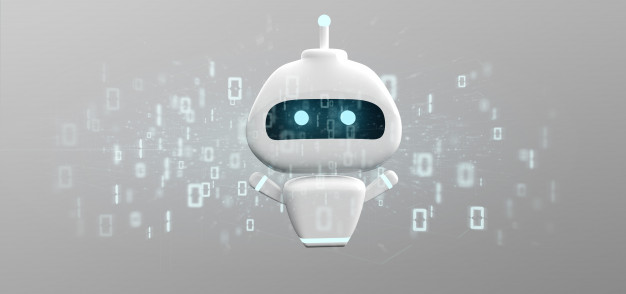
As the use of artificial intelligence (AI) grows across all industries, the business benefits of conversational technologies become ever more obvious.
Today’s chatbots are nothing like the preset FAQ bots of yesteryear. They communicate with humans so naturally that users hardly notice they are speaking with a program. In 2019, Acquire recently reported that 40% of millennials (18–34 y.o.) interact with chatbots every day.
Furthermore, AI conversationalists paired with intelligent automation of processes can provide complete guidance to your target person whether on a journey down the sales funnel, through the employee onboarding phase, or educating a user about the product.
But powerful modern chatbots are an investment to take seriously. Before you make a virtual conversationalist part of your workflow, make sure that you are ready to tap into the potential of this technology and get the most out of it. The following checklist should help you do that.
1. You have established a seamless manual process
If your company has been in business long enough, you must know by now exactly who your target audience is and how to serve them. Only then will introducing a chatbot be a wise choice.
Let’s assume that you want to automate your sales process with a chatbot. At this point, the major customer problems that your product or services solve(s) must be clear to you. There must be a seamless sales process in place, drawing on repetitive interaction patterns and practices that have time and again proved themselves efficient.
You might also want to introduce a virtual assistant to improve your customer service. The same rule applies here: the better you know your customers’ issues and the smoother your current request handling process, the more gains will you reap from introducing a chatbot.
Conversely, if your business is new, you might want to begin with carefully studying known cases from your industry. If you build a chatbot based on other companies’ experiences, you should be prepared to closely analyze its performance and make tweaks accordingly.
The more specific your target audience is, the more effort you will need to put into customizing your chatbot.
2. Your customers don’t mind communicating with a chatbot
You need to be sure that your target audience is okay with having a chatbot on the other end of the line or screen as they engage your business.
This survey by Convince & Convert shows that 30% of adults in the USA fear chatbot errors, while 55% still like chatbots for their quick response. But what about your particular target audience? Depending on several parameters that define your consumer base, such as age and technology literacy, your customers can:
- feel entirely uncomfortable talking to a chatbot instead of a human operator
- prefer human response at particular interaction levels
- accept a chatbot every step of the way as long as communication remains meaningful and efficient.
It’s your task to find out which of those is the case. One possible way to do that is to run a test where your operator introduces themselves as a chatbot and acts accordingly. At some point, they may ask a customer whether they would prefer to speak with a real person and switch them to another operator acting like a human if the answer is ‘yes’.
This will allow you to analyze the reaction of your audience and point you in the right direction.
3. Your target audience is growing or large already
You can go with a flesh-and-blood specialist or two, as long as your audience remains limited.
On the other end of the spectrum, a large or rapidly growing customer base can become a problem. You will want to keep the quality of your interaction as high as possible.
As your incoming traffic increases and customer outreach activities intensify, you will need more direct communicators on board. And, by the way, someone will need to onboard, train and manage these people — all at your expense.
But what if you could train just one operator and clone it as many times as needed? This is what conversational AI bots allow you to do. Sometimes companies ask us to develop chatbots that train employees.
4. You operate globally
Time zones define consumer activity hours. There are 24 of them in a day if you deliver services or products to audiences worldwide.
Efficient communication across all regions throughout the day requires a lot of human power. Besides the hour count, there are cultural differences, legal specifics and multiple languages at play. Building and managing a distributed team, in this case, might not be the most cost-effective option for you, to say the least.
An AI-powered assistant can save the day for a global company. Using machine learning algorithms, you can train a chatbot to handle customers just like a local specialist would then integrate it into your workflow and you are covered.

5. Request handling involves data processing
If your customers reach out for additional information or to initiate an operation (like order placement) a chatbot can outperform its human counterpart by many times.
Operators processing complex requests act as an intermediary between the customer and the company’s technical facilities. They clarify the query and either forward it to the relevant department or resolve it with available resources. This may involve browsing databases, analyzing information, launching processes and other time-consuming activities.
Instead of that, you can opt for a conversational AI layered on top of intelligent automation. This is how it works. A chatbot:
- receives information from your customer,
- asks questions to better understand the request,
- forwards it to another bot for execution,
- gets back to the customer with the result.
All this happens in a matter of minutes, thanks to automation. The ultimate result is exceptional customer support and higher deal throughput.
An example from our experience: a startup once challenged Intetics to develop a chatbot suggesting food-wine combinations.
6. Chatbot ROI is higher than that of your staff
At the end of the day, the return on investment (ROI) in the implementation and maintenance of a chatbot is all that matters.
Every point of our checklist echoes closely with the final score: ROI. But there are more aspects to factor into that calculation:
- The type of chatbot you want to develop (e.g. AI-driven conversationalists are more effective and expensive than simple command-operated bots)
- The cost of implementation and maintenance of the chatbot per given period
- The average request processing time
- The average cost per request as handled by an employee (based on work hours of an operator and their manager)
- The average ROI of a request
- The average number of requests handled by humans per given period
- The average number of requests that your staff fails to process per given period
- Request number increase forecast
- Payback period
By calculating your chatbot ROI, you will have crucial figures to add to your decision-making process.
Over to you
Once you’ve read this checklist, you should have a better understanding of whether a chatbot is the right choice for you at this stage. Chances are that your competitors have either already introduced conversational technology or will do so in the next few months.
Make sure you are ahead of the growing business trend because it is very likely to shape the expectations of your customers.
If you need a more detailed consultation on this subject or are already determined to boost your growth with an intelligent digital conversationalist, contact us.
